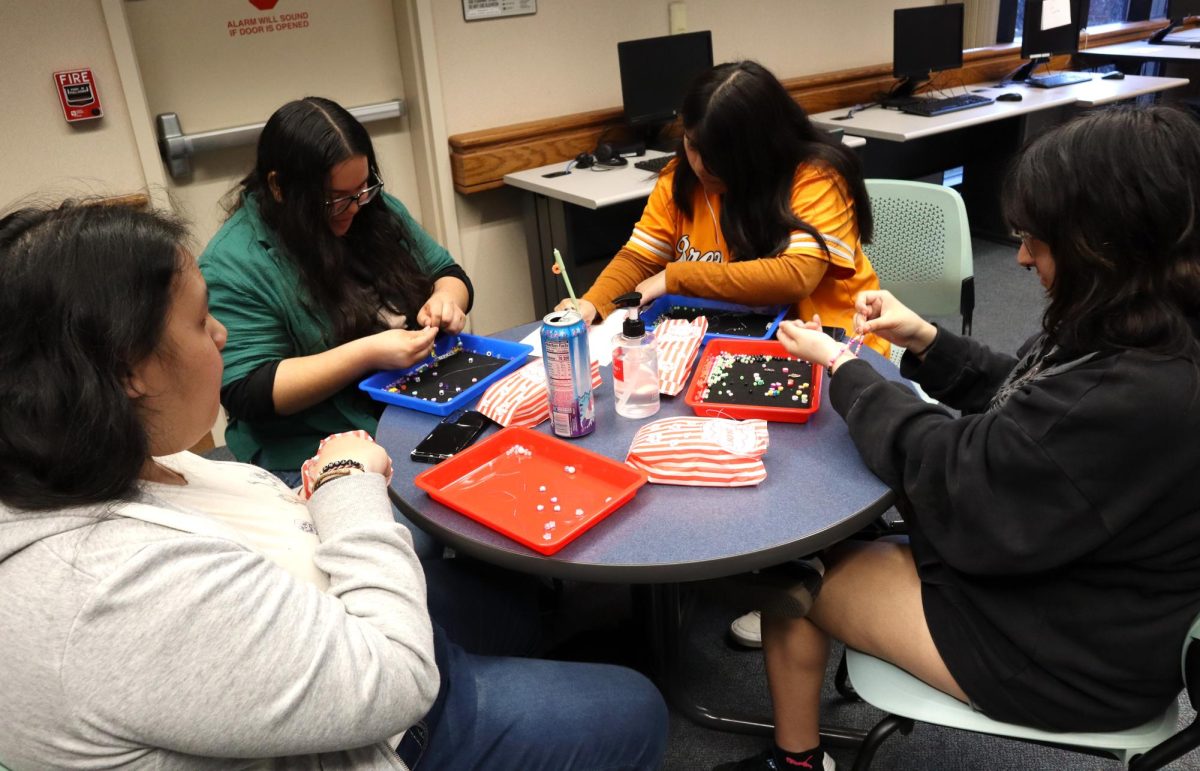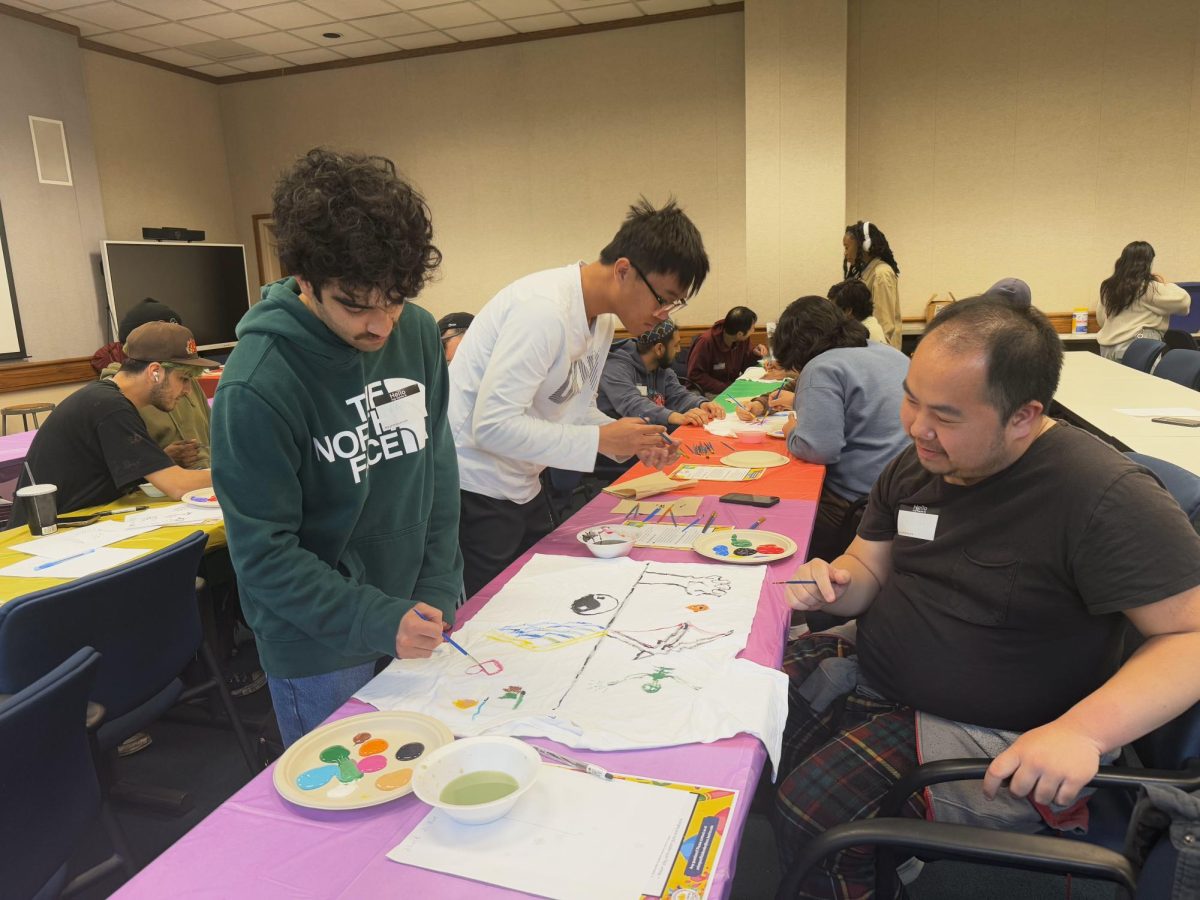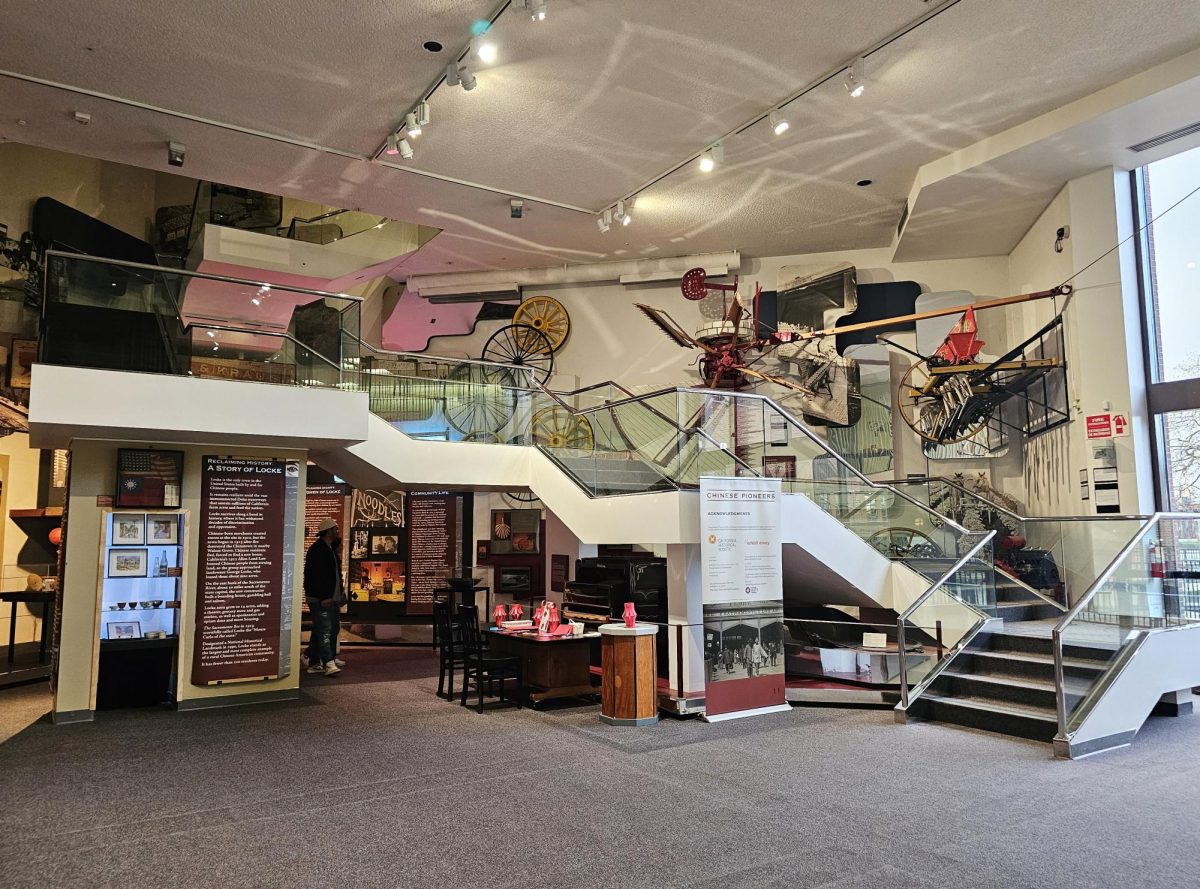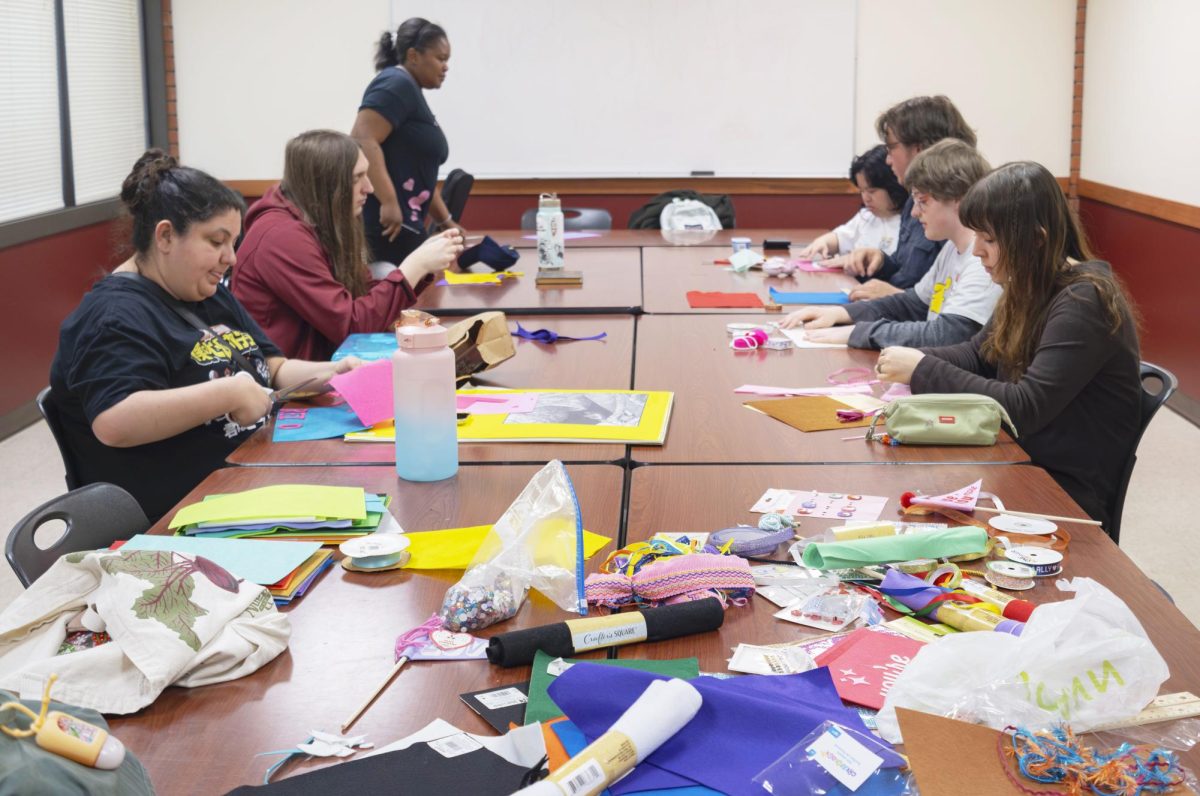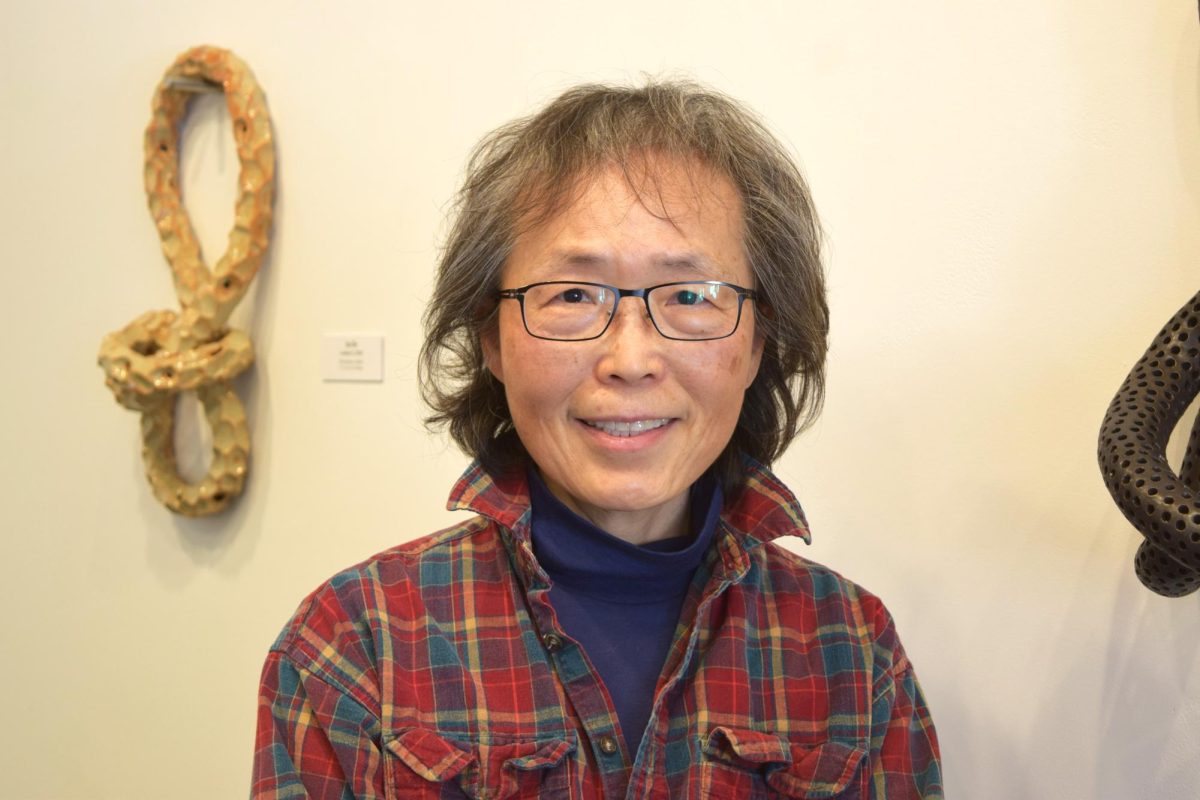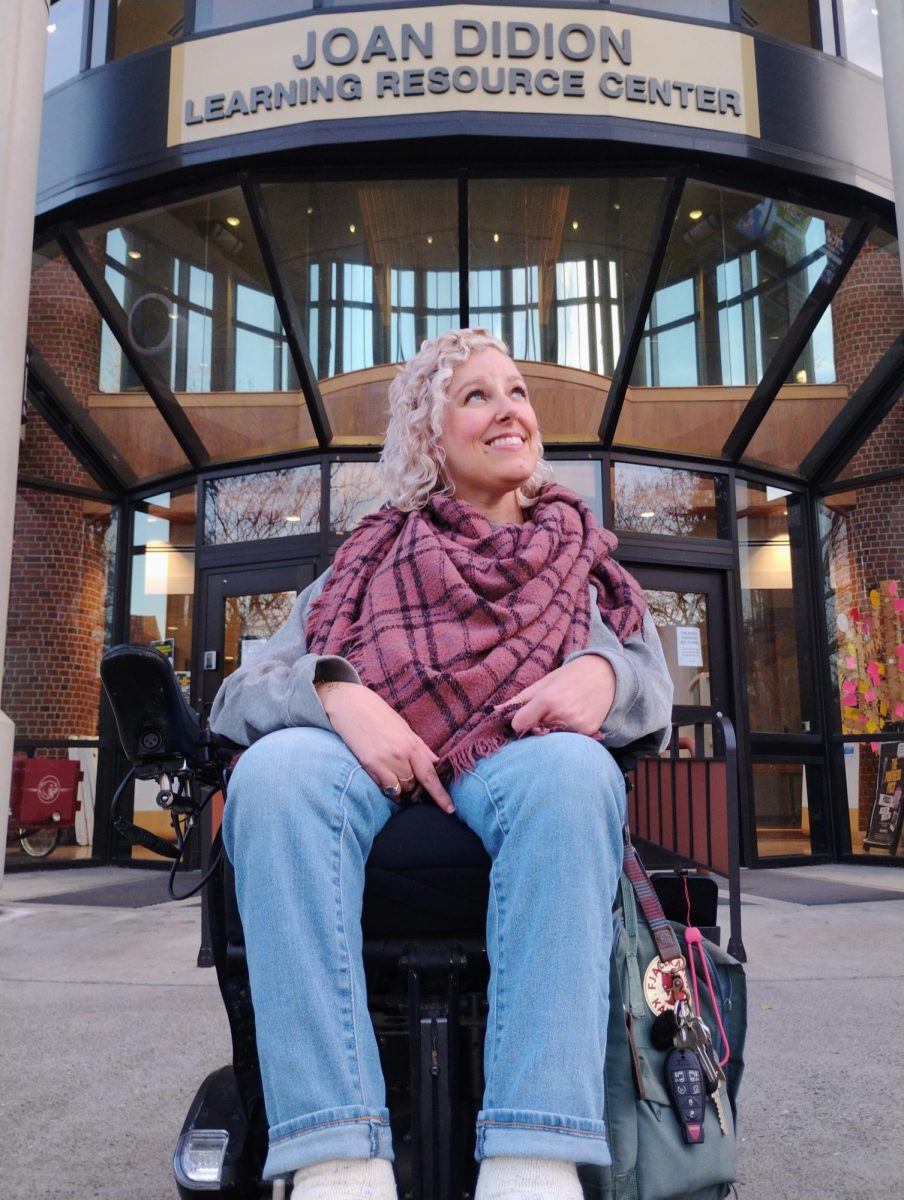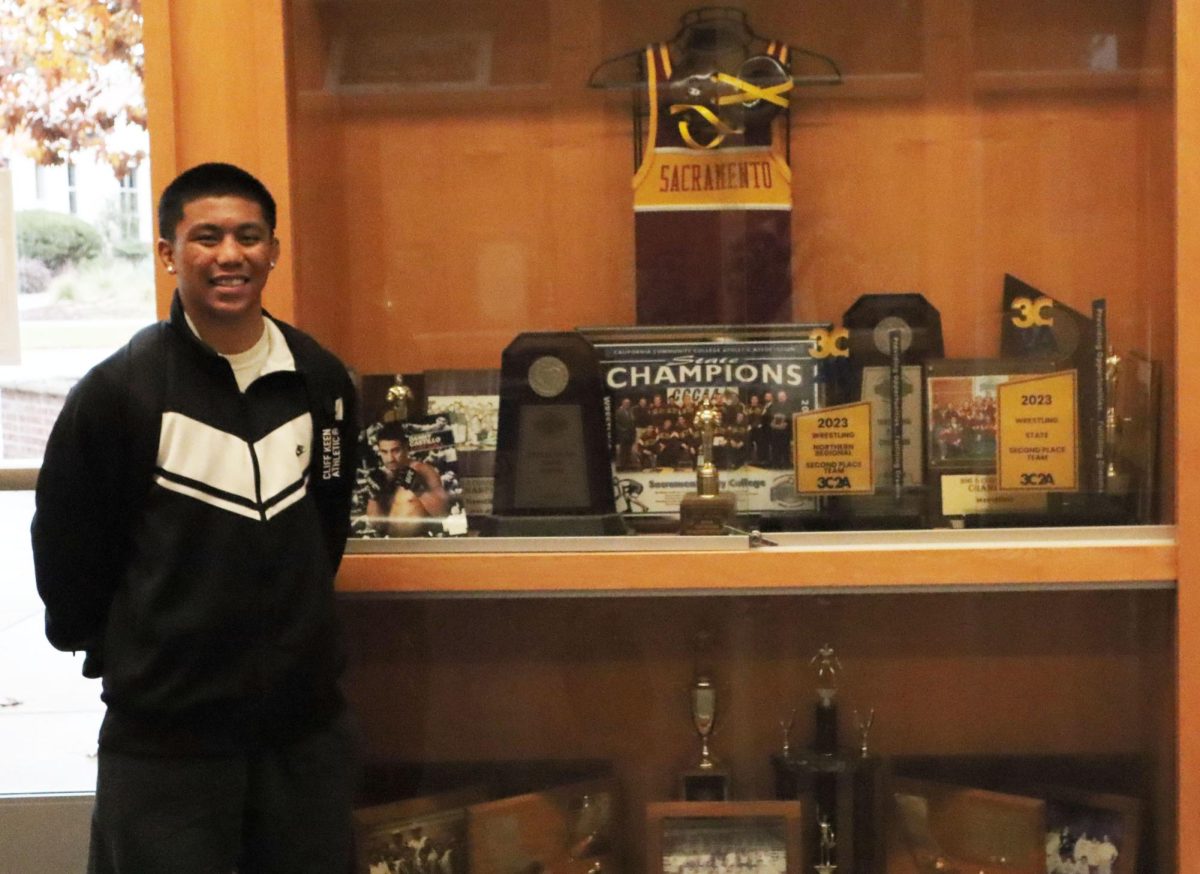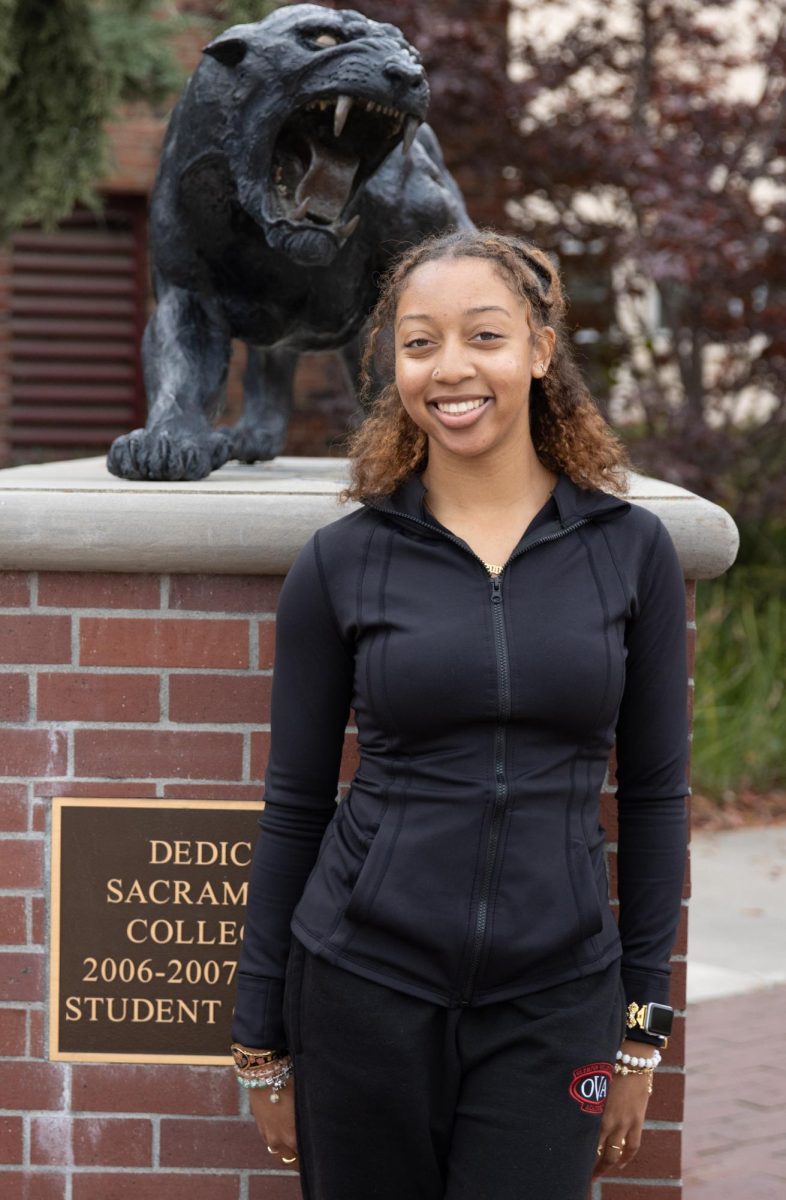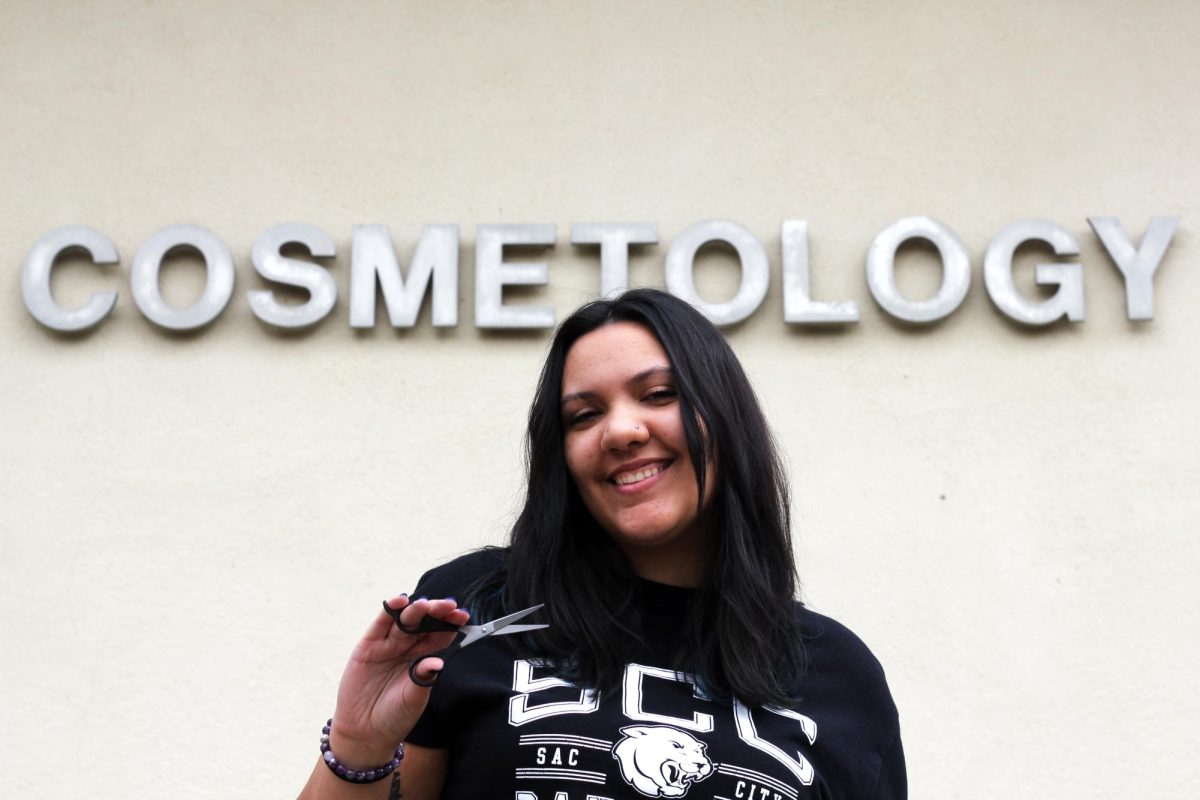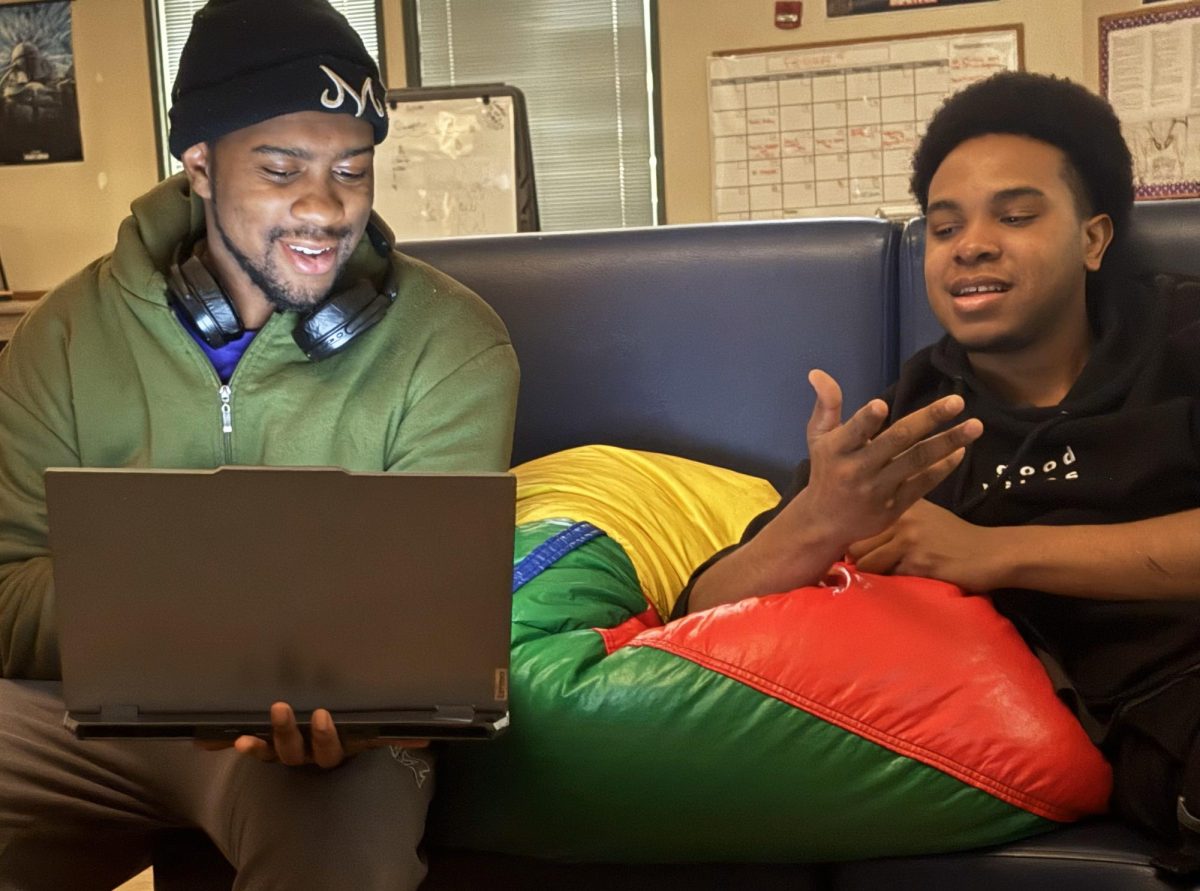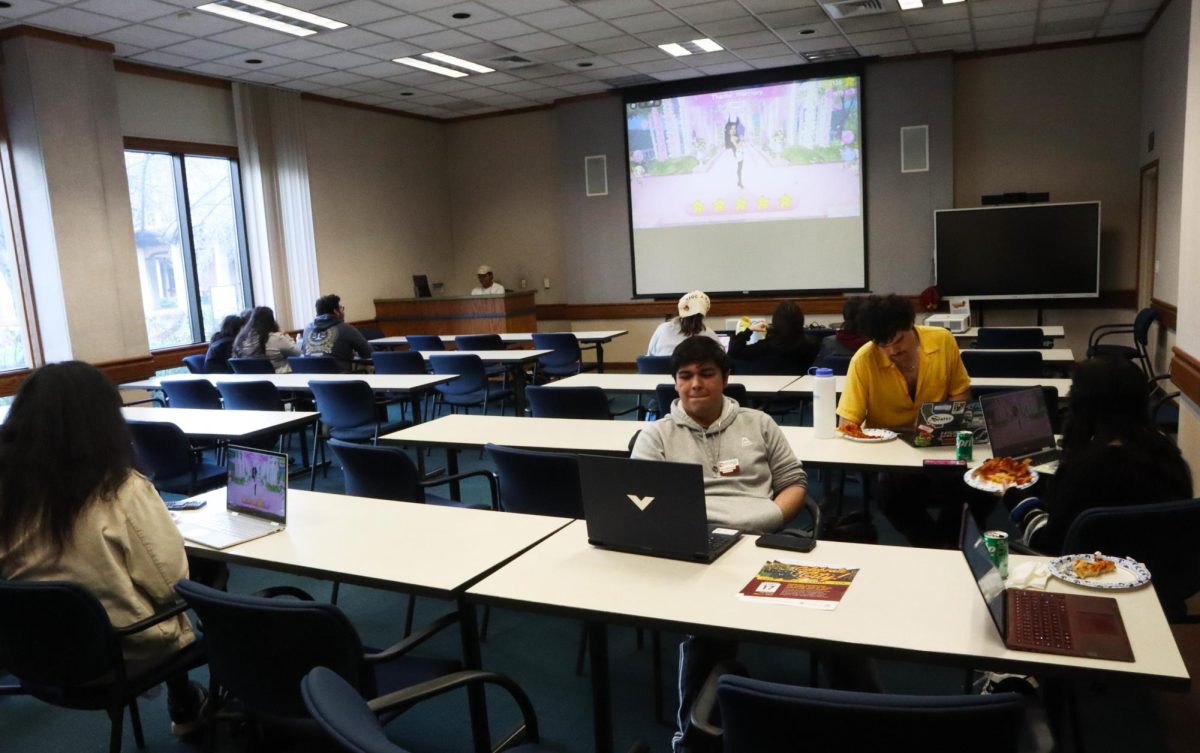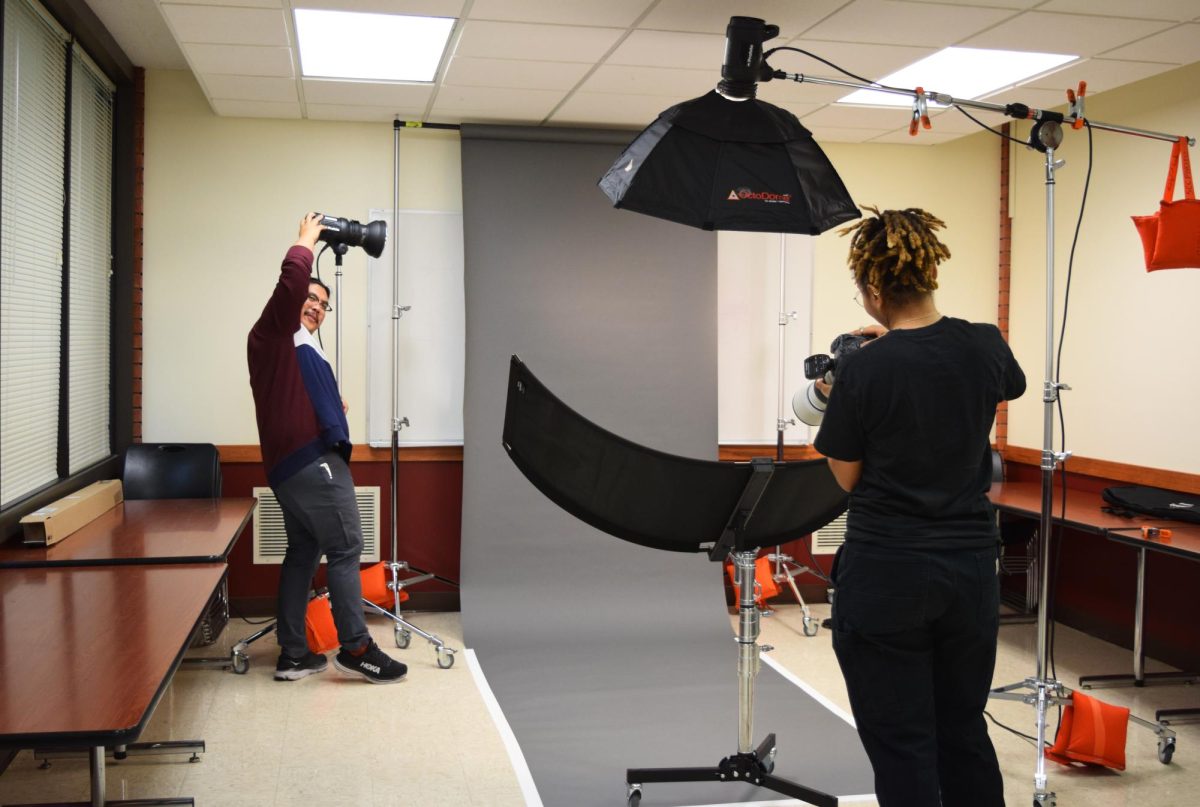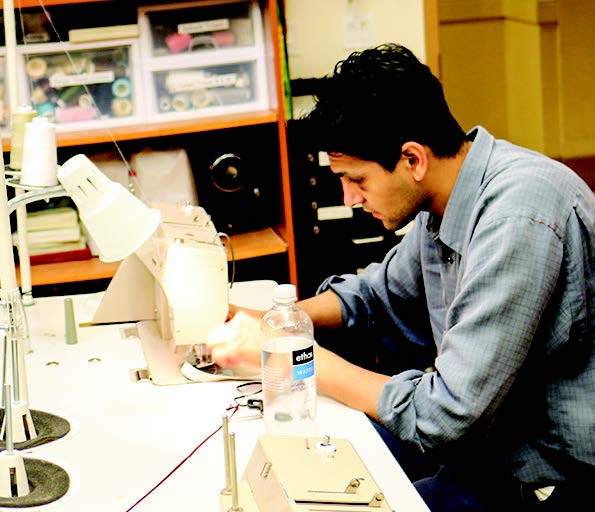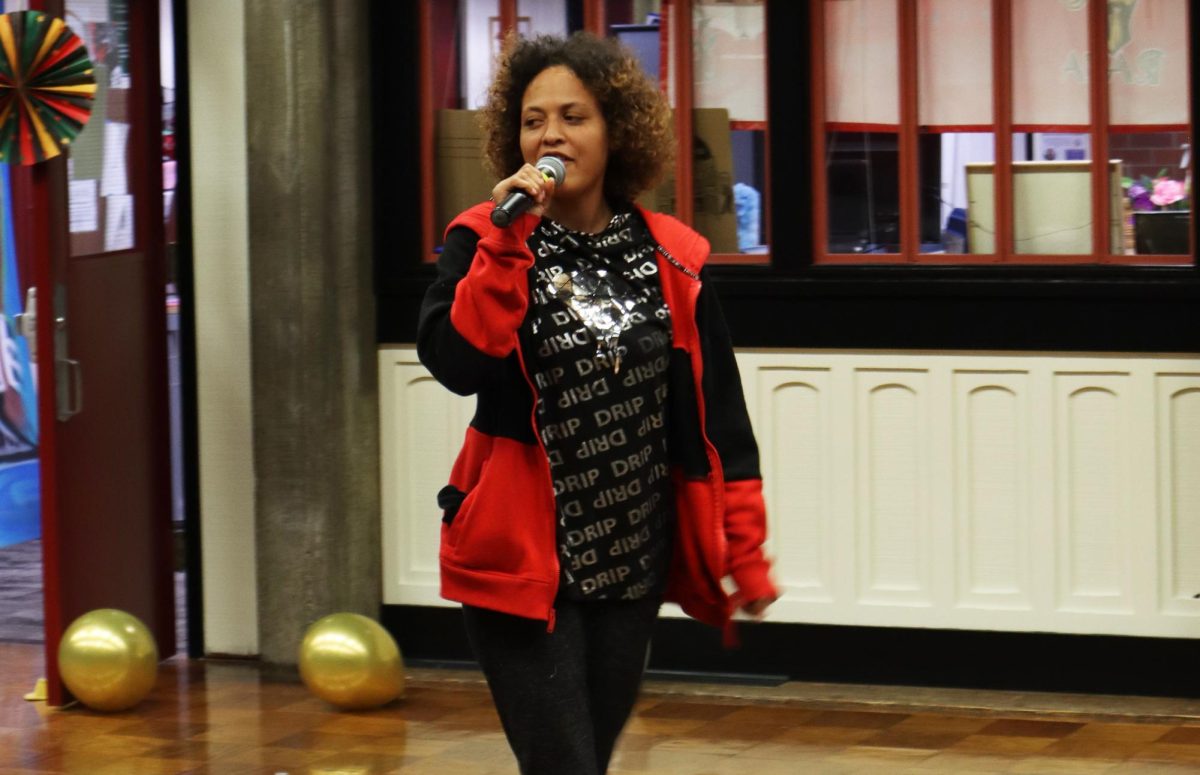Rosaura de la Cruz | Staff Writer | rosaexpress7@gmail.com
City College students, staff spotlight inner workings of the theater department
A new year brings new talent to City College’s theatre arts department with a main stage production of “The Cradle will Rock,” playing in the Main Auditorium of the Performing Arts Center through Mar. 22.
However, what audiences see on stage is only a small fraction of what happens in the theater department. A whole production team works behind the scenes on everything from lighting and costumes to sets and sound to put a play onstage.
The production team has worked in both the auditorium and in classrooms to prepare for the show. Since “The Cradle Will Rock” is a musical, the actors have worked extensively with voice and choral music professor Daniel Paulson, who said he has enjoyed his first year working for City College.
“The students in the theater department have been a delight to work with,” he said. “They are very committed, dedicated and hard working.They have invested in my vocal pedagogy and are seeing huge results.” Paulson said he was delighted at the opportunity to assist with the musical, despite what the student actors said about the difficulty of learning the music.
“Singing can be fun, but it’s not my top tier of choices. But it’s a part of theater, like costumes,” said theater major and actor Connor Oshiro. Oshiro described the character of the two-person Pinto Horse he played in a production of “Cinderella” as being particularly challenging.
“I spent most of the time in the costume bent over and hot,” he said. “But it made for good laughs and a different experience in that work field.”
On the other hand, Nicole Sivell, theatre arts costumer, designer and shopper, described one of her favorite costumes: a big, hairy outfit for a wooly mammoth.
“It was for the production of ‘The Skin of our Teeth,” Sivell said. “It was huge and lots of fun to make.”
”Sivell teaches students how to make costumes for each main stage production at City College. The costume shop is cluttered with sewing machines, finished pieces and costumes in progress. Sivell said everyone has to be careful of the pins that are everywhere.
“Our motto is ‘Pins are sharp; things are sharp,’” Sivell said with a laugh when describing the countless fingerpricks she and her students have acquired throughout the semester.
Sivell also explained how long and difficult making a costume can be. She said every piece is made by students and detailed to perfection, right down to the seams. The costumes that are provided to the actors can take anywhere from one hour to six weeks to make before being seen on the stage.
While Paulson and Sivell work with actors and costumes, Professor Shawn Weinshienk and his class put in extra hours to perfect the sound and lighting.
The stage craft department’s ultimate rule of production is “safety first,” according to Weinshienk. Alongside teaching stage lighting and stage crafting,
Weinshienk also teaches the class how to make their sets “actor proof” with a five-hour lab and hands-on demonstrations, especially with lighting.
“It’s the last element to bring together, and it’s difficult because you can’t touch it,” he said. “The lighting needs to be artistic. I teach my students how to bring abstract and realism to the set.”
Weinsheink proves that all of the hard work he and his class provide has paid off According to Weinsheink, in the last 11 years and 66 college productions, there have been no stage errors, no mistaken floating pieces, no light bursts and no broken microphones. Everything is carefully and safely prepared for success.
“Every business has a side unseen and unknowing how much work goes into it,” said Weinshienk. “Theater isn’t just for actors. That’s why we strongly encourage our theater students to take both acting and production classes, so they can gain a sense of everyone’s job from everyone’s perspective. It opens the door for so much opportunity in the show business.”
Actor Oshiro describes how being in the Theatre Arts department has affected him. “Every teacher I’ve taken in the theater department has had a huge impact on me. They’re extraordinary and love what they do.”
Weinshienk says his favorite part of itall is to see how much his students grow in each production.
“I love seeing my students’ faces as their groundwork comes to life. know they built these sets that [have] the audience clapping and cheering is the best
part,” he said. “I love what I do. I know all of us staffers in theatre do, too, and we hope we do have a huge impact on these kid’s lives.”
Oshiro says that the teamwork the department has is what makes the productions so special.
“Being a part of a team is absolutely the best part of theater,” he says. “And when it comes to an end, it’s sad, but great to have met and worked with everyone”



